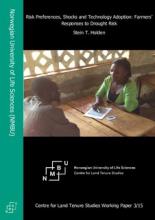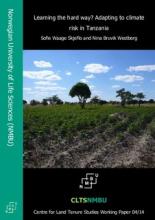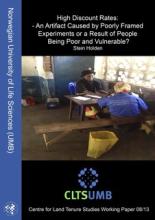Land Library
Welcome to the Land Portal Library. Explore our vast collection of open-access resources (over 74,000) including reports, journal articles, research papers, peer-reviewed publications, legal documents, videos and much more.
/ library resources
Showing items 1 through 8 of 8.Climate risk represents an increasing threat to poor and vulnerable farmers in drought-prone areas of Africa. This study assesses the fertilizer adoption responses of food insecure farmers in Malawi, where Drought Tolerant (DT) maize was recently introduced.
East–Southeast Asia is currently one of the fastest urbanizing regions in the world, with countries such as China climbing from 20 to 50% urbanized in just a few decades. By 2050, these countries are projected to add 1 billion people, with 90% of that growth occurring in cities.
Climate risk represents an increasing threat to poor and vulnerable farmers in drought-proneareas of Africa. This study assesses the maize and fertilizer adoption responses of food insecure farmers in Malawi, where Drought Tolerant (DT) maize was recently introduced.
According to the Climate Risk Index, less developed countries are generally more affected than industrialised countries. The countries affected most in 2013 were the Philippines, Cambodia and India. For the period from 1994 to 2013 Honduras, Myanmar and Haiti rank highest.
This report provides an outline of protected areas and biodiversity in the Lower Mekong Basin.
We use recent panel data on Tanzanian farm households to investigate how previous exposure to weather shocks affects the impact of a current shock.
This study revisits the issue whether poverty and shocks are associated with high discount rates by using an incentive compatible Multiple Price List approach in a poor rural population in Africa where a substantial share of the population had been affected by drought in the recent rainy season.
A research paper by Jochen Hinkel and Timo Menniken on institutional adaptation to the effects of climate change in management of transboundary river basins, published in 2007 by Institute of Environmental Systems Research, University of Osnabrueck.





